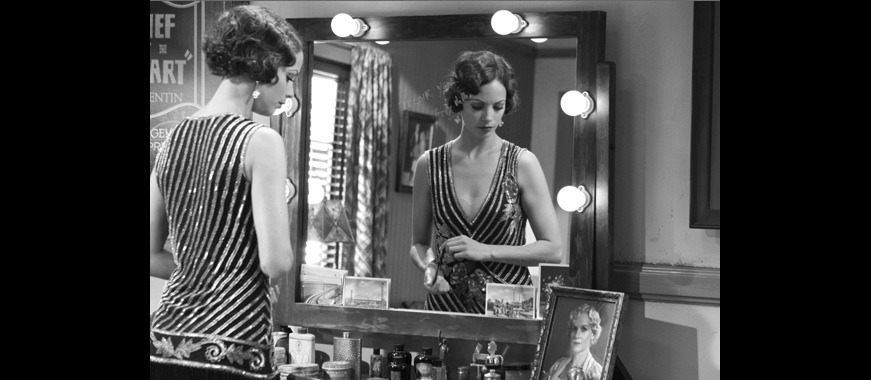Laurence Bennett

AS: I loved all the vintage graphic design that your team did in The Artist.
LB: Martin Charles was the graphic designer on the show. He’s incredible. In prep we worked at trying to establish a level of realism and really get the flavor of the graphics of the time. The graphics in the picture not only enrich the movie but were also incredibly helpful in informing everyone in the entire crew, as well as the cast, about the feeling of the time.
AS: How did you go from traditional design to production design?
LB: I lived in Ireland for a long time and although I had a design practice with a friend and showed my paintings at a gallery there in Dublin, I also worked in fringe theater. I think it was working in theater that inspired me to work in a collaborative form with other people. The power of a collaborative artistic effort has a kind of resonance and strength that very often individual efforts can’t match. And so, in the eighties I went back to Los Angeles and started working on the fringes of film design. I assisted an art director for a while and shortly after, possibly too soon, was designing projects on my own.
AS: What is your process when you first read a script for a movie you’re about to design?
LB: When I read a script for the first time I see a version of the movie in my head. I visualize it. The first movie I see may not be the one that we make. It’s important not to get too attached to your first conceptions. Everything’s always in flux. Sometimes they are the right intuition and sometimes that can take you off in the wrong direction. I try to stay open to what the world out there might tell me. And to the people I meet, the other creatives, the co-creators on the show. The collaboration can only enrich it. Because I am only one person.
AS: Do you always work very closely with the DP?
LB: Absolutely. Probably the most serious education I got in how I needed to approach design from film was not from a designer but from cinematographers. I was fortunate enough to do a lot of commercials even before I began doing television. And it was a time where the rage was for agencies to get the world’s best cinematographers to direct their commercials. I worked with Allen Daviau, Vilmos Zsigmond, and László Kovács. Jordan Cronenweth was a great mentor to me, he had a lot of patience and was very giving of his time and his talent. From Jordan I learned the most: about how to approach what I built for the DP to shoot, in really simple terms. For me it begins not with blocking or the physical needs of the set as much as with lighting. Lighting is always at the front of my mind when I begin designing a scene.
AS: One set that stood out for me in The Artist was the stairwell where symbolically he’s going down and she’s going up. For location scouting, do you spend a lot of time going out on your own?
LB: What I try to do, depending on the project and the time-frame and what part of the world we’re in, is to both get out by myself and with the location manager as quickly as possible. To just get a feeling for the region we’re working in. Usually the first weekend I’m in a new city I get in a car with no maps and just get lost. That’s the way you learn a place.